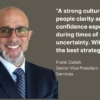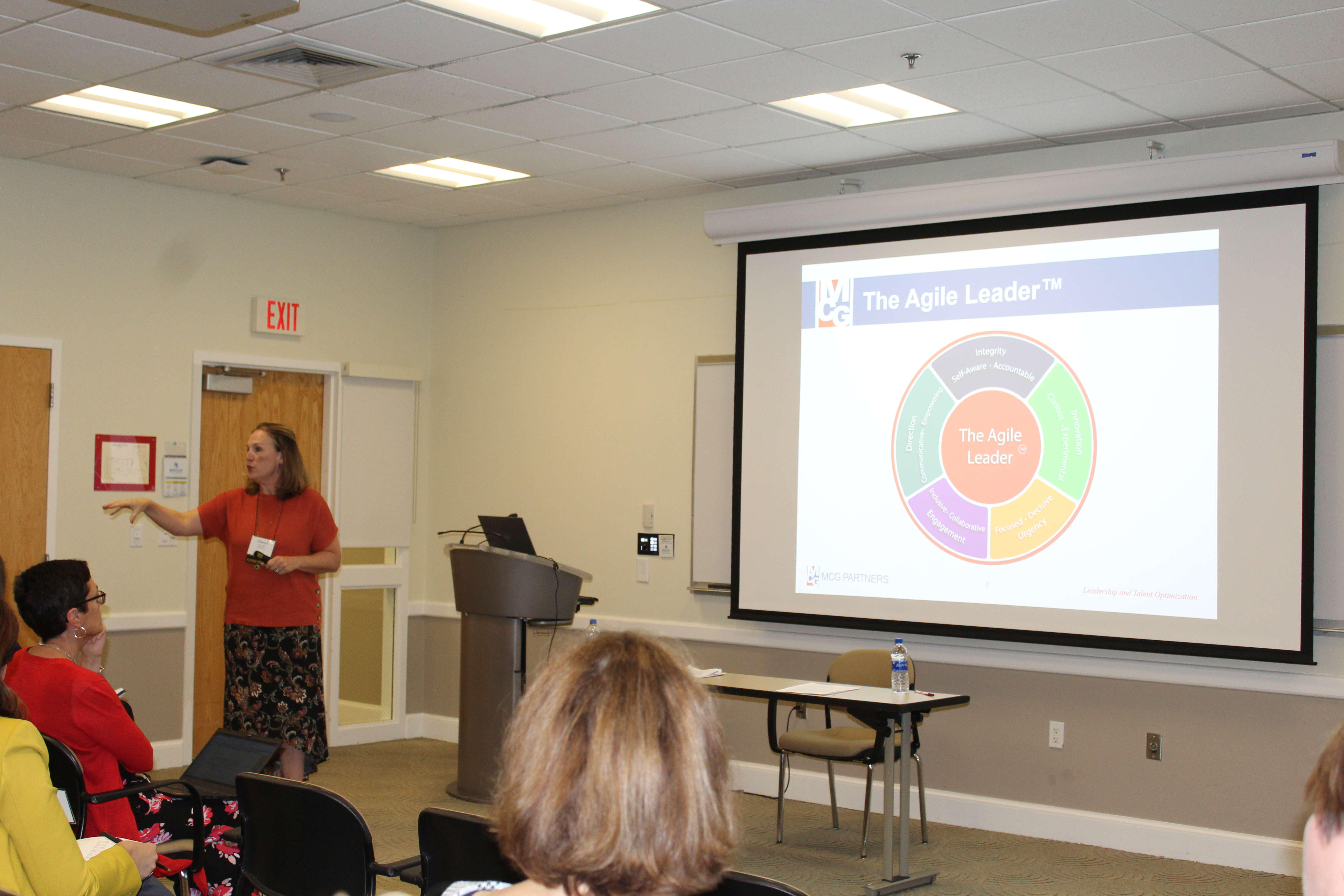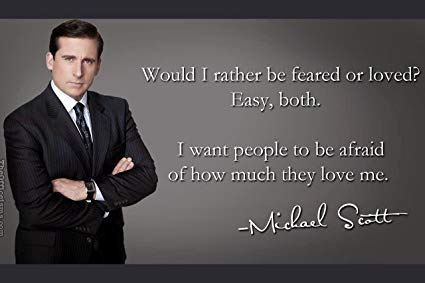Executive Presence Impact: Preparation, Polish, Performance
Each of us knows “that” person who walks into the room and owns it. What is it that makes them stand out, to cause people to stop and want to be part of what they are sharing? We are familiar with the term executive presence, but it can be an elusive trait to define and achieve.
Executive presence is multi-faceted and embodies how you are seen, perceived, and experienced by others. It refers to how you come across, share information, ask questions, develop those around you, work, with people, and communicate mission, vision, and purpose. There is no one “type” of person that executive presence is limited to — you don’t have to be an extrovert, outspoken, etc. The difference is in how you perceive and present yourself, and having alignment between the two. And, most importantly, it takes work for everyone.
“WHETHER YOU THINK YOU CAN, OR YOU THINK YOU CAN’T— YOU’RE RIGHT.” – HENRY FORD
- When you want to work on your version of executive presence, think about how the following three elements come together: how you act; how you communicate; and how you look.
Each of these elements has specific attributes:
How You Act
- With passion: The expression of commitment, motivation, and drive that shows people you believe in what you do, that you love what you do, and that you believe in others and what they do.
- With sincerity: The conviction of believing in and meaning what you say, with empathy.
- With thoughtfulness: Thinking something through or carefully considering something before responding.
- Self-confidence: The air of assurance, such that others know you are strong and resolute, but not arrogant; to be humble with belief.
How You Communicate
- Vision: The expression of a clear idea of what is possible and how to achieve it strategically.
- Clarity: The ability to tell your story in an intuitive, clear, and compelling way.
- Authentically and with candor: Expressing ideas and collaborating with others transparently and genuinely.
- Storytelling: Telling engaging stories that are relatable and relevant with energy and heart.
How You Appear
- Poise: The look of control or balance; pausing when you need to gather your thoughts; and not getting rattled when you are challenged.
- Openness: Not prejudging; being willing to consider another’s point of view.
- Empathy: Being accessible to others while being genuinely interested in them and their perspectives.
If I were to start with one aspect, it would be storytelling. Then, you can weave in the other aspects. Storytelling is a key factor in executive presence, and it often has little to do with the content of the message. The focus of storytelling is on how you position the content, tell your story, and engage and relate to others. That’s because more than 80% of most communication is nonverbal — your audience, whether it’s one person or one thousand, is relying on things you do outside the content of your message to make important decisions about you and your message. Like most people, you probably don’t spend much time working on these non-content things. However, your audience spends most of its time evaluating them. This disconnect is why many people are perceived as not having much executive presence or even executive potential.
Executive presence is an art, like negotiating. It’s about developing your voice. Finding your voice is a personal journey that must be refined and mastered over time through experimentation, failure, and repeated execution. 1
How can you prepare to tell and authentically live your story? Take a cue from Simon Sinek, and “start with your why.” You have to be able to tell your story, your passion, your purpose, and your why. People want to hear stories — stories that capture their hearts, dreams, and aspirations. Take some time to think through these questions:
- How do you describe your story?
- Why are you where you are?
- How have you arrived there?
- Why do you do what you do?
- What led you there?
- What were your successes and failures along the way?
- What is your inspiration for what you do now?
- Why you?
Answering these questions authentically, practicing your “pitch,” and getting feedback from mentors, peers, or others, can help shape how you are perceived. Spend time observing others – what do you notice, what draws you to them, what can you incorporate into your approach that works within your style?
Getting an executive coach can help you gain critical feedback and identify opportunities for growth. Having an executive presence is not magic and you are not born with it — it takes work. Through repetition, feedback, and mastery of skill, you can create your own version of executive presence.
- The Rise of the Agile Leader. Can You Make the Shift; Chuck Mollor, Prominence Publishing (June 25, 2020)
About MCG Partners
MCG Partners is a leadership and talent optimization firm– aligning your business and people strategy for maximum results. MCG Partners a woman-owned consultancy and is also a Predictive Index® (PI®) certified partner. To learn more please contact Stephanie Holmgren at stephanie.holmgren@mcgpartners.com and at mcgpartners.com









